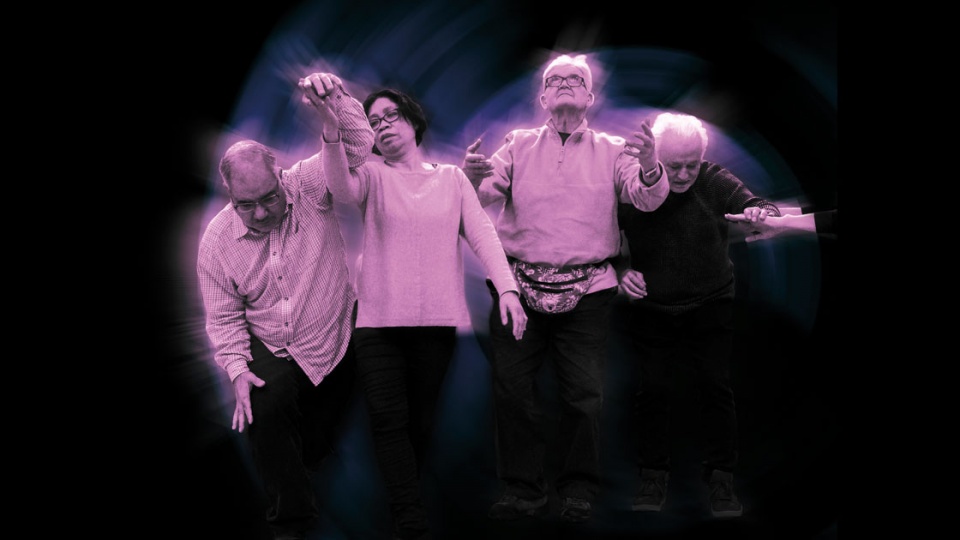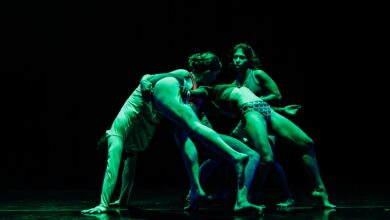Stroke Odysseys, The Place – Review
Pros: A poignant combination of choreography and music makes this a beautiful show to see.
Cons: Without foreknowledge the lack of a plot in the traditional sense might confuse some audiences. Cathartic show in which professional performers work with a group of people who have suffered a stroke.
summary
Rating
Excellent
Stroke Odysseys is not your regular dance and music show. Accompanied by professional musicians, singers and dancers, survivors of traumatic brain injuries – otherwise known as a stroke – take centre stage in this colourful performance. Together they embark upon a sensorial journey riddled with feelings and emotions about what it means to live your life after suffering this serious attack.
The production is the result of a three-year arts and health research project in which choreographer Ben Duke, composer Orlando Gough, health professionals and survivors of traumatic brain injury have been collaborating. The project aims to challenge the institutionalisation people come up against while undergoing hospital rehabilitation, offering new creative skills and opportunities to counter the frustration and lack of agency faced by those who are living with the effects of a stroke.
In the panel discussion preceding the show, Lucinda Jarrett – leader of the project – explained how she was inspired by the experience of her father, who had been victim to a stroke. She found that hospitals were sensory depriving environments and there was a need of to change the perception of disability and illness. In other words, “advocate for life after stroke”.
Stroke Odysseys was possible thanks to the work of around fourteen people, a collaboration which Ben Duke confessed was complex and not always easy. However, if we judge the project by its results, the product of their work was not only successful but also stands as a beautiful piece of art.
The show starts with the assembly of the performers on the stage while some words are projected into a wall: “sheet metal worker”, “lecturer”, “nanny”, “Iraqi”, “mother”. They are statements which describe some aspects of the people in front of us. Some are young and some are older. There’s no apparent link between them except that they all suffered from a stroke at some point in their lives. The professional musicians and dancers who accompany them enable them to express their feelings through graceful choreography and meaningful music.
During one of the most dramatic parts of the show, the music cleverly recreates the moments immediately preceding a stroke: quick palpitations which suddenly stop and change everything around. The performers carry white boards on which we see projections of the human body, and footage of the individuals before they suffered brain injuries. We also see a mountain made of chairs on the middle of the stage which is bravely confronted by the actors. Through these expressive actions we understand how simple things that we take for granted might become titanic efforts as a result of a blow inflicted on our bodies.
There’s no plot or logical sequence between the scenes. This is above all an emotive performance, an act of freedom which requires us to melt with it in order to see things from the eyes of their protagonists. A worthwhile and beautiful journey.
Author: Ben Duke and Orlando Gough
Director: Ben Duke and Orlando Gough
Producer: Rosetta Life
Booking Until: 19 May 2018
Box Office: 020 7121 1100
Booking Link: https://www.theplace.org.uk/whats-on/ben-duke-orlando-gough







